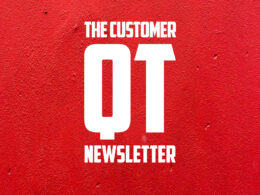One of the hottest trends in the startup ecosystem is product-led growth (PLG). The PLG approach to introducing a solution to the market is focused on the end-user.
Initially, many B2B founders viewed PLG as more of a go-to-market motion where providing a freemium offering would enable a company to be product-led.
by Rajat Bhargava
However, this is not enough. End-users aren’t simply the people who use the product and decide whether to recommend it to the organization. They often hold the position of ‘buyer’ as getting started with the solution can commonly be done on a credit card and then later expensed.
The complexity of the relationship between PLG companies and the end-user/buyer, among other aspects, requires changes in other areas around how you run your operations, marketing, and business goals.
Here’s how you do it.
Building your other processes around PLG
Taking up a PLG strategy involves other processes. For example, the implementation process around PLG is frequently automated and self-serve.
Instead of salespeople as the initial point of contact, customers can talk to technical people whose only role is to support the customer in their trial or use of the product.
If you want to make your product able to sell itself, you will have to invest more in how you design the product journey and think about potential pitfalls. Some of your first hires will therefore be designers that really understand the customer interface and how to make the most impact.
One major area of differentiation between PLG companies and their non-PLG counterparts is the use of data and telemetry. Instead of salespeople manually managing anecdotal data on their prospects, PLG companies gather data and evaluate how end-users leverage their product.
What actions did they take, and what did they not? Is the prospect following the ideal customer journey that leads to a sale?
All of this data is recorded, analyzed, and then fed back to the engineering and growth teams to adjust how the product functions. Let’s look at an example.
Say your product has three functions, one of which is a real differentiator. Looking at your product trials, you can see how quickly your prospects start using that differentiating feature and how much they interact with it.
You can also judge whether you can encourage users to interact with your services in ways that are more likely to convince them to convert into customers.
Another hallmark of PLG companies is clarity in their pricing and packaging. Typically, enterprise sales vendors have forced customers to ask for pricing in order to get a conversation started. The result of all this activity is that end-users automatically look for clarity in pricing, simplicity in packaging, and a growth model they can explain to their leaders.
PLG companies have to respond with self-service sales, expansion, and easy payment methods, enabling a frictionless experience for the customer and efficiency for the PLG organization.
Lastly, the PLG company’s primary goal is product use, not qualifying whether the customer has money to buy their product. While salespeople are a part of the purchase process, their success — and consequently how they are compensated — should be dependent upon getting a foot in the door and making their customers successful with their product.
PLG customers typically grow more after the initial sale takes place, so smart organizations support their customers with whatever resources they need to widen their use of the product over time.
Rather than using incentives based on initial sales volumes, you can base performance goals on successful trials that convert, renew sales and expansions in usage within those customers.
Putting PLG to work in the right ways
Of course, not every company is destined to be a product-led growth organization. For many, it just doesn’t make sense. If you sell physical goods, being product-led can be much harder.
You may be able to use portions of the PLG model such as embedding telemetry if you happen to have a physical hardware technology product, but for non-tech solutions, PLG is probably a non-starter.
Even in the tech world, not every company needs to aspire to be PLG. An organization that sells into the C-suite with a company-wide solution (think ERP, HRIS, and the like) may find that a PLG model doesn’t work for them.
Thinking through the amount of consulting that you might have to take each customer through — and how difficult it would be to automate those steps — can help you see if PLG is right for you.
Alongside this, you also have to think about companies that you work with and how to align your goals with them. If you work with partners — a common model for enterprise B2B companies — then your channel strategy and compensation models will also have to reward the same behaviors that you want to encourage.
If you don’t look at this, then your partners won’t have the same mindset that you do.
For B2B and B2C-focused software and SaaS startups, there may not be a better time to be a PLG company. The shift to consumer buying for technology solutions — whether for their business or personal use — ensures that startups can embed a deep product-led focus to help their end-users succeed. And, with today’s discerning buyers, products must be near perfect to succeed.
PLG companies can rapidly innovate with their products to better match their customers’ needs and therefore win in the market.
 Rajat Bhargava is CEO and co-founder, JumpCloud. Rajat is an MIT graduate with two decades of experience in industries including cloud, security, networking, and IT, Rajat is an eight-time entrepreneur with five exits including two IPOs, three trade sales, and three companies still private.
Rajat Bhargava is CEO and co-founder, JumpCloud. Rajat is an MIT graduate with two decades of experience in industries including cloud, security, networking, and IT, Rajat is an eight-time entrepreneur with five exits including two IPOs, three trade sales, and three companies still private.
This article originally appeared on TheNextWeb.
Photo by Joshua Lawrence on Unsplash.













